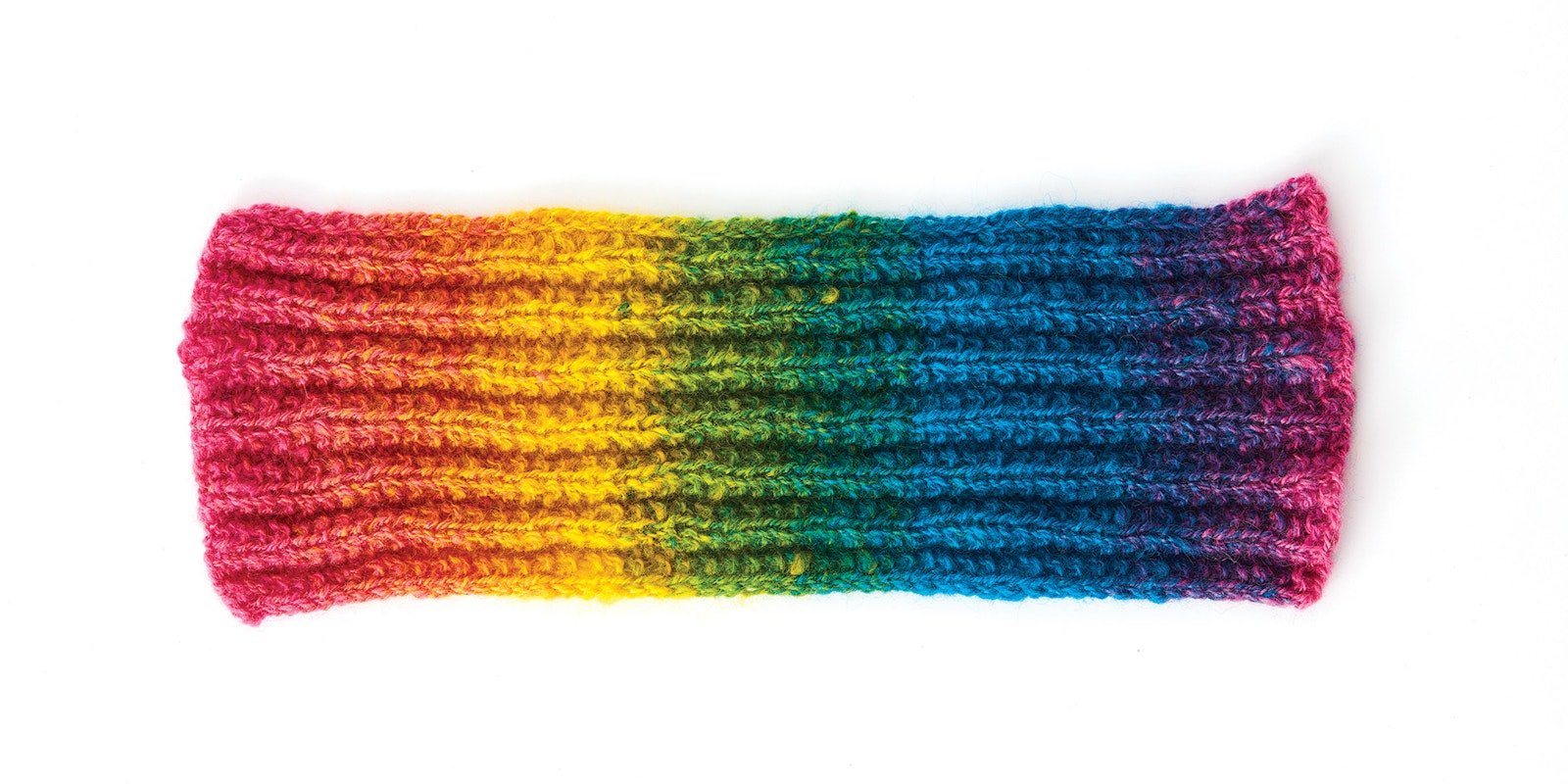One reason spinners keep a stash of fiber is to play with color. Blending colors makes us feel like children with a brand new set of paints. Look around, and you’ll see color blending inspiration anywhere. In the Fall 2017 issue of Spin Off, contributor Jolie Elder was inspired by the CMYK inks from an inkjet printer.
My art teacher lied to me!
As an elementary-school child, I was taught that there are three primary colors: yellow, red, and blue. I was taught that those colors form the color wheel, with orange, green, and violet as the secondary colors. It didn’t always work perfectly, but it generally worked for craft materials from clay to tempera paint.
 To blend her CMYK color wheel, Jolie began with white Romney sliver. The fiber emerged from three dyebaths in vivid, saturated colors of yellow, magenta, and cyan.
To blend her CMYK color wheel, Jolie began with white Romney sliver. The fiber emerged from three dyebaths in vivid, saturated colors of yellow, magenta, and cyan.
In high-school physics, I learned a little more. I learned that the color wheel is based on subtractive processes, which is why when you mix everything together you get black—or at least dark mud. Each of these colors reflects only one color, absorbing (subtracting) the rest. When we projected light on a white wall in the physics laboratory, we saw an additive color wheel. That wheel’s primaries are red, green, and blue, with secondaries of yellow, cyan, and magenta. Lots of electronics, including televisions and projectors, use this RGB color wheel. If you’ve seen “smart” lightbulbs that promise sixteen million colors or light-up toys that change color, they do this by emitting red, blue, and green in different intensities. If you have played with color-correcting tools for digital photography, you may have seen sliders with blue versus yellow, green versus magenta, and red versus cyan.
I could see that the secondary colors from light were similar but not identical to the primary colors I originally learned as the color wheel. I did not realize it was only a color wheel.
Yes, there are other color wheels.
 Jolie used a scale to divide the colors by weight and mixed them across the drum of a drumcarder to create batts with even color transitions.
Jolie used a scale to divide the colors by weight and mixed them across the drum of a drumcarder to create batts with even color transitions.
Wheels Within (Color) Wheels
If you have a color printer, then you already know the printer’s color wheel, CMYK. Your color printer likely has cyan, magenta, yellow, and black ink. When you print a color picture, the printer makes tiny dots of colors. If you’ve ever looked at a printed page under high magnification, you may have seen these dots. View the page at normal distance, and your eye cannot see the separate dots. Instead, your brain blends the different colors to create a new color.
Artists have explored these effects for centuries. Perhaps the best-known artist to explore optical mixing is the Postimpressionist Georges-Pierre Seurat. His style, pointillism, places tiny dots of color in patterns that optically mix to create a luminous, vibrant surface not possible by simply mixing paint colors together. This is the visual equivalent of hearing harmonies in music or pairing foods with wine. The parts create a sensation we perceive as a unit, but it is a more complex and interesting unit.
 After spinning two sets of batts onto separate bobbins, Jolie plied them together without correcting most places where one ply got ahead of the other.
After spinning two sets of batts onto separate bobbins, Jolie plied them together without correcting most places where one ply got ahead of the other.
All of this got me thinking about how to blend color for spinning. I wasn’t as comfortable with RGB or CMYK as I was with the traditional color wheel. If I blended the printers’ primaries, what would I get? Could I make an optically mixed rainbow yarn? Would the colors be good?
Want to learn more about how Jolie blended the colors for her yarn? Check out the full article in the Fall 2017 issue of Spin Off.
Also, remember that if you are an active subscriber to Spin Off magazine, you have unlimited access to previous issues, including Fall 2017. See our help center for the step-by-step process on how to access them.
JOLIE A. ELDER is a knitting teacher and designer whose cleverest invention is a method for working stockinette-based laces reversibly. She blogs her fiber experiments at www.jolieaelder.blogspot.com.
Originally published June 19, 2019; updated June 24, 2022.

